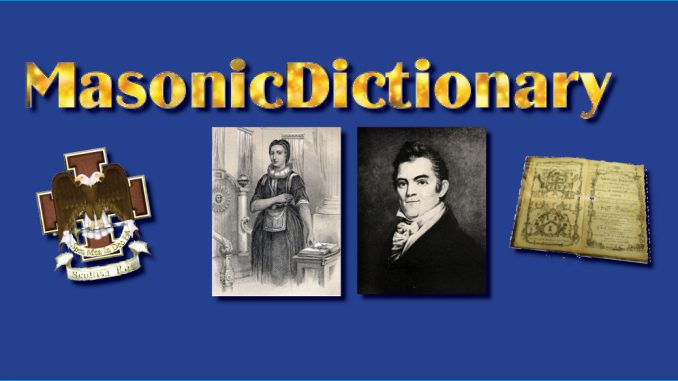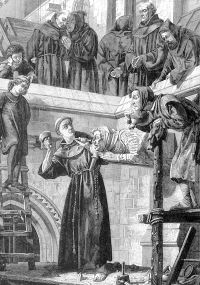
 Operative Masons
Operative Masons
We distinguish Operative Masons, builders of the Middle Ages, founders of Masonry, from Spectulative Masons, present members of the Fraternity, using the builders tools as emblems and symbols. The Latin for toil, or work, was opus, still used in that form in English to signify a musical or literary achievement. Opus was the root of operari, to work, whence we have our operate, operative, operation, opera, operator, and many others. The Operative Mason was one who toiled at building in the plain, literal sense of the word. Speculative will be explained farther down.
– Source: 100 Words in Masonry
OPERATIVE ART
Freemasonry is divided by Masonic writers into two branches, an Operative Art and a Speculative Science. The Operative Art is that which was practiced by the Stone-Masons of the Middle Ages. The Speculative Science is that which is practiced by the Freemasons of the present day. The technicalities and usages of the former have been incorporated into and modified by the latter. Hence, Freemasonry is sometimes defined as a Speculative Science founded on an Operative Art.
– Source: Mackey’s Encyclopedia of Freemasonry
OPERATIVE MASONRY
Freemasonry, in its character as an Operative Art, is familiar to everyone. As such, it is engaged in the application of the rules and principles of architecture to the construction of edifices for private and public use, houses for the dwelling-place of man, and temples for the worship of the Deity. It abounds, like every other art, in the use of technical terms, and employs, in practice, an abundance of implements and materials which are peculiar to itself. This Operative Art has been the foundation on which has been built the Speculative Science of Freemasonry.
– Source: Mackey’s Encyclopedia of Freemasonry
OPERATIVE MASONS
Workers in stone, who construct material edifices, in contradistinction to Speculative Masons, who build spiritual edifices.
– Source: Mackey’s Encyclopedia of Freemasonry
OPERATIVES
Name applied to those, as Dr. Thomas Carr, Dr. C. M. Merz, Sir John A. Cochburn, Sir Frederick Pollock, Clement E. Stretton, active in the modern study and practice of old gild customs.
– Source: Mackey’s Encyclopedia of Freemasonry
